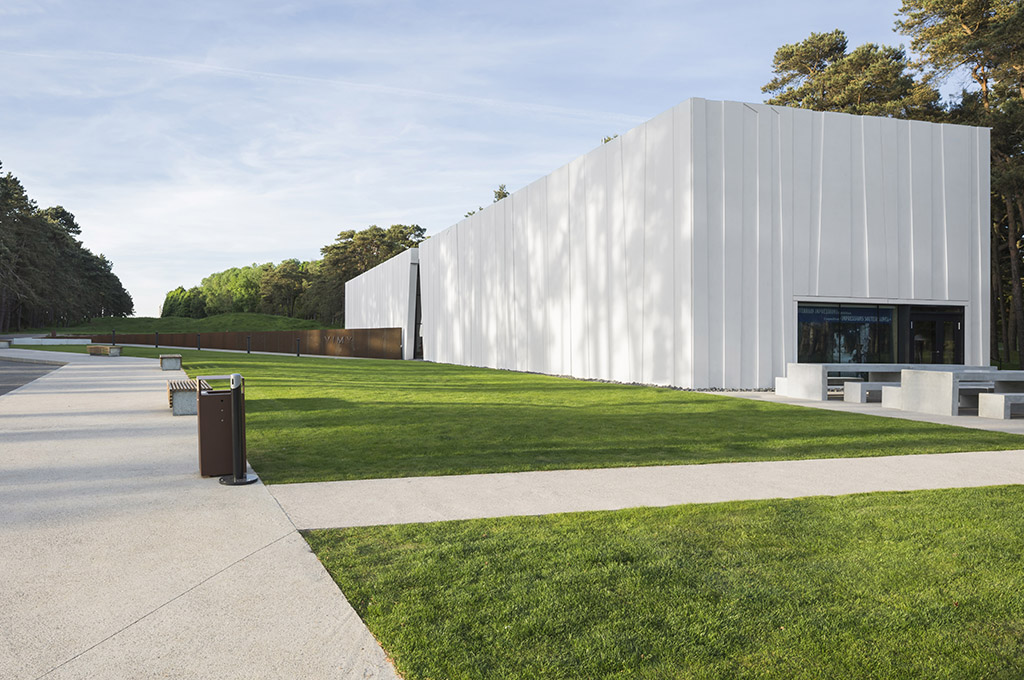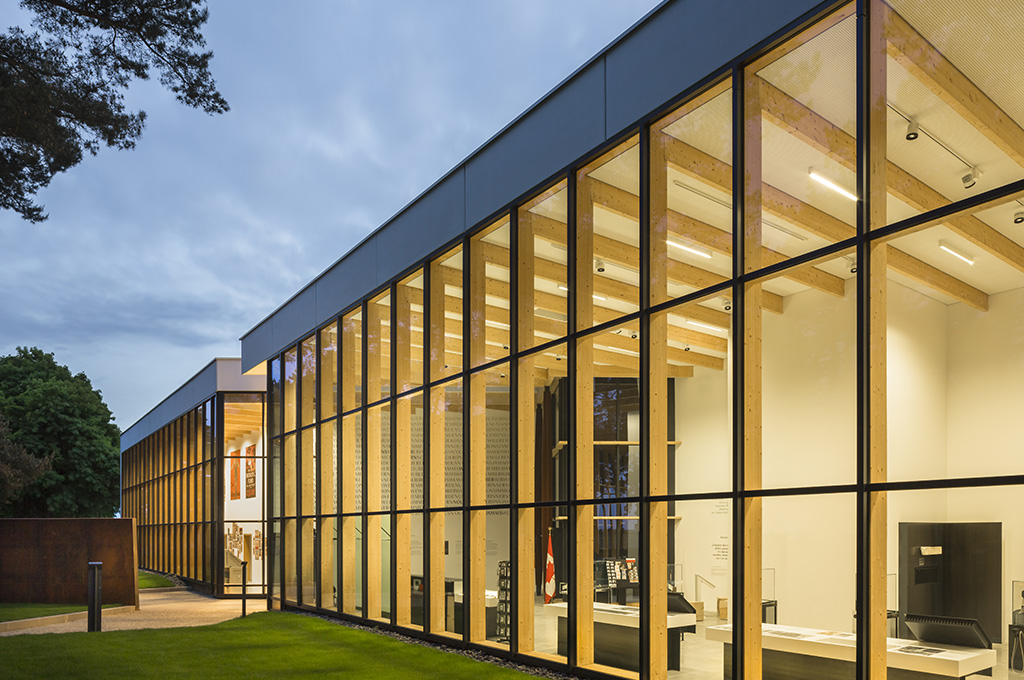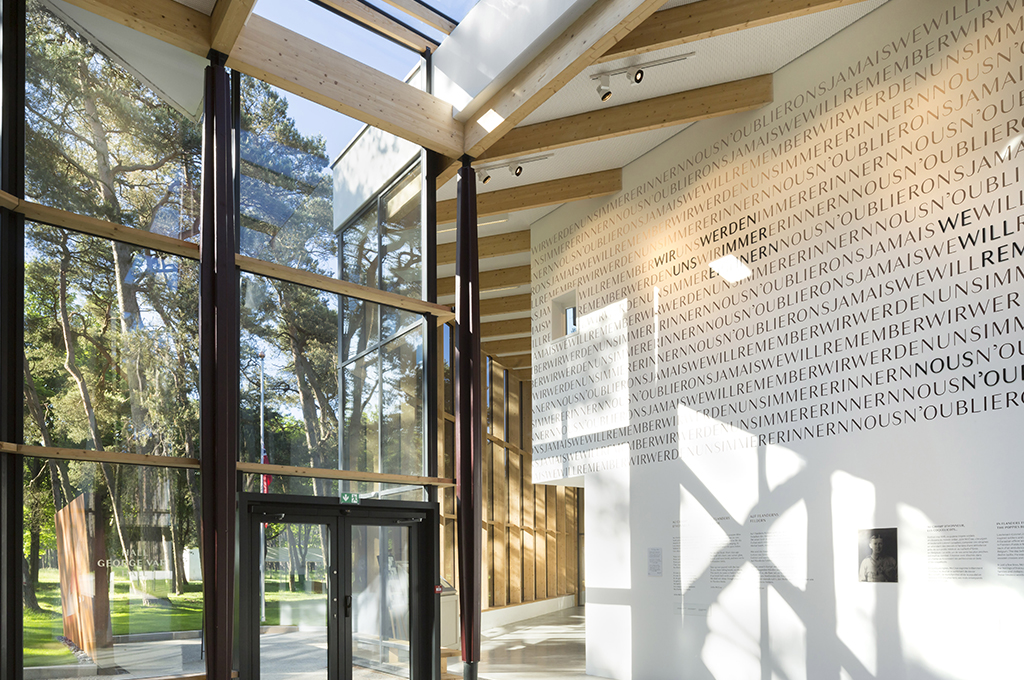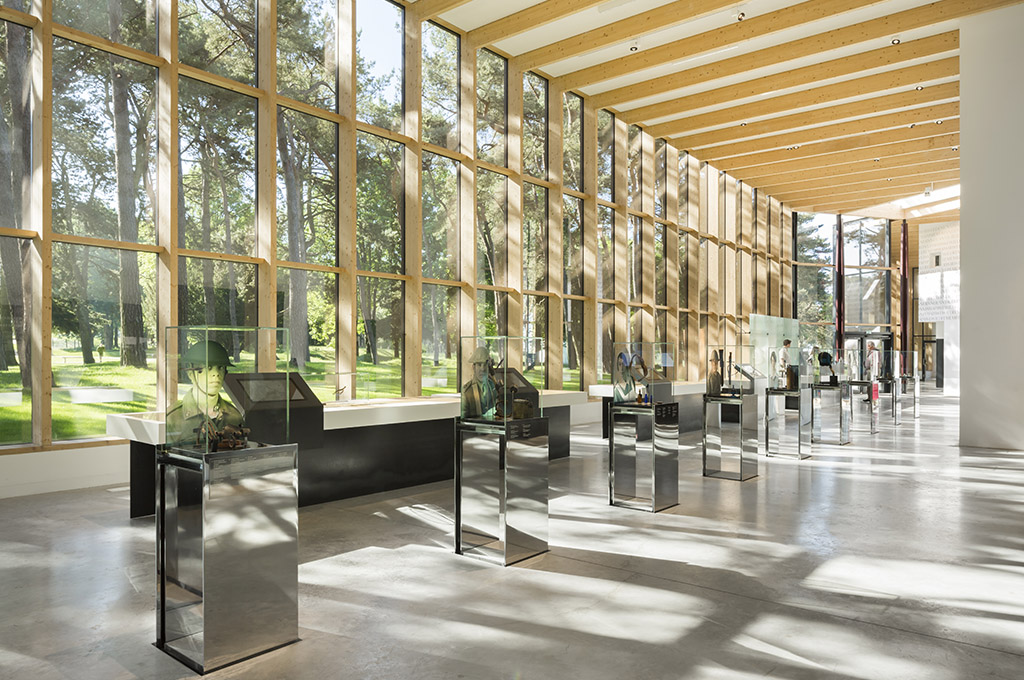Location: Nord-Pas-de-Calais, France
Architect: Robertson Martin Architects Incorporated, John Lampros Architect
For the Canadian National Vimy Memorial Visitor Education Centre, within a National Historic Site, the central challenge was “how does one commemorate today?” Maintaining the visual primacy of the Memorial and the sightlines of two allées inscribed in the landscape, inspired by careful historic analysis, visitors engage with multiple readings of history and memory. An “axis of history,” representing frontline trenches, intersects with an “axis of memory” toward the monument. Entering through an exterior cleft in the solid mass contrasts with the expansive interior light-filled views of interpretive artifacts and exhibits overlooking preserved, cratered, and wooded battlefield terrain.
 Photo Credit: Stephane Groleau
Photo Credit: Stephane Groleau
One of only two National Historic Sites not located within Canada, this project required complex planning and coordination with a myriad of stakeholders including Government of Canada, Vimy Foundation, Veterans Affairs Canada, Parks Canada, plus local and national French Government and Municipal officials. Balancing these different perspectives required careful management of functional program needs, while mitigating risk and budget. Evoking emotional connections, visitors engage with multiple readings of history and memory. In addition to the aforementioned axes of history and memory, notions of “container vs. contained” are manifested in the play between the impression of entering through a cleft in a solid mass and the expansive views looking onto preserved pock-marked battlefield terrain.
 Photo Credit: Stephane Groleau
Photo Credit: Stephane Groleau
The detritus of war, including ever-present unexploded ordnance and human remains, presented challenges to the project. Remains of a vast underground tunnel network, voids, and scarred battlefield terrain also helped inform placement of the building and serve as one of the main draws for visitors. To minimize the impact of erecting a contemporary structure by working within the footprint of already disturbed ground, rigorous studies of the terrain were conducted and previously unknown spatial relationships were uncovered. An unobtrusive location along the allée was selected to frame visitors’ gaze towards the distant monument, reinforcing its connection to the past.
 Photo Credit: Stephane Groleau
Photo Credit: Stephane Groleau
Characterized by high-performance precast concrete cladding, sustainably sourced heavy timber framing, and ultra-low-flow plumbing fixtures, the Vimy Visitor Education Centre exemplifies contemporary, sustainable design. The high-grade building envelope design met stringent French standards, incorporating insulation and radiant floor heating connected to high-efficiency electric boiler. A/C demands were decreased by situating the building next to a sheltered treeline, screening chillers from direct sunlight and maximizing cooling via passive ventilation. Thanks to the improved air quality as well as natural daylighting, neither interior comfort nor elegance was sacrificed to achieve energy reduction targets.
 Photo Credit: Stephane Groleau
Photo Credit: Stephane Groleau
More than just an important military conquest, Canada’s victory was symbolic of the young Dominion stepping out from the shadow of its British heritage. Of the multitude of First World War memorials and visitor centres in the region, Canada’s Visitor Education Centre stands out for its quiet, simple, evocative excellence. As the pine forest beyond the glass curtain wall slowly reclaims the scarred battleground, the Centre affords a sense of permanence and memory for the soldiers who fought there.
This blOAAg post is part of a series exploring the OAA’s 17 Design Excellence Finalists for 2022, as selected by our jury.
Click here to see other projects from this current award cycle.